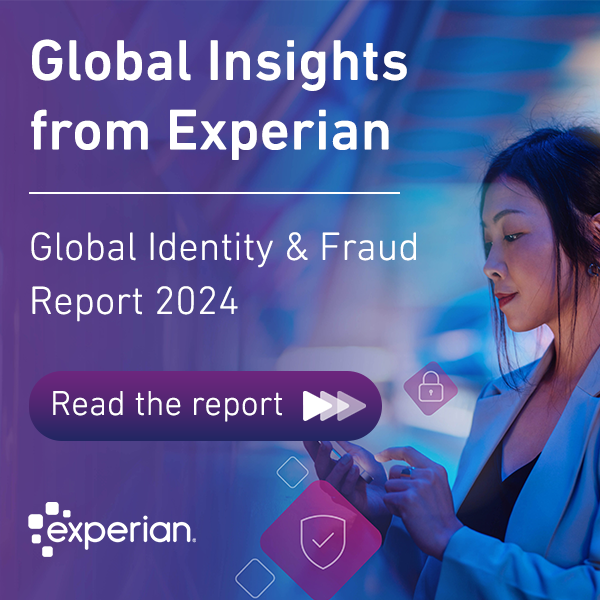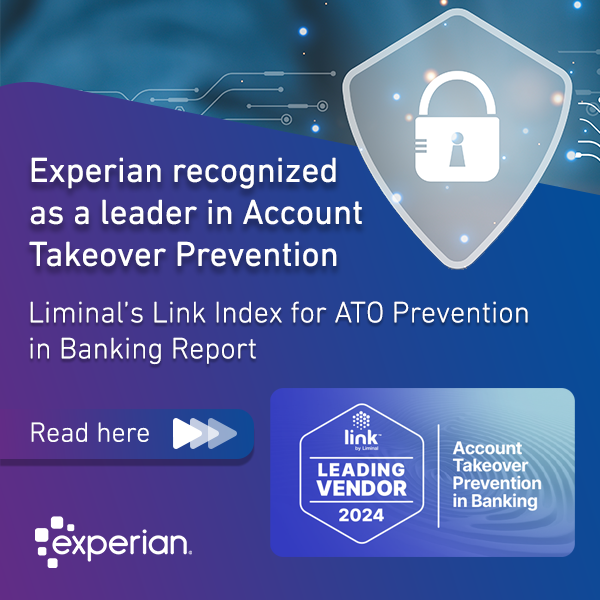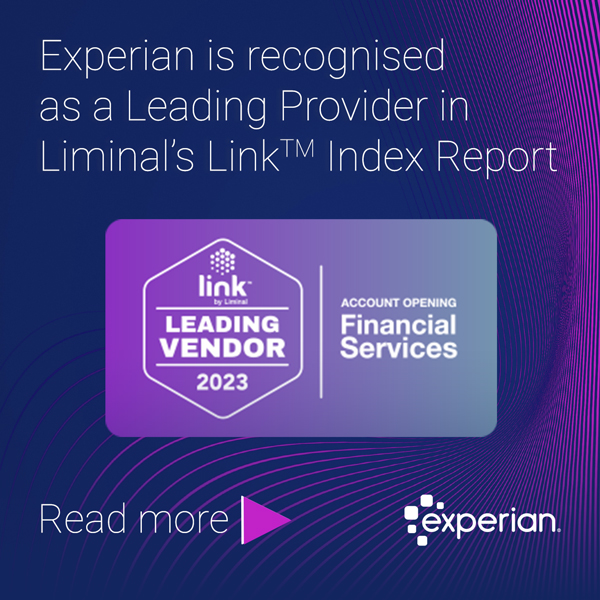Customer Experience
Engaging consumers in a more meaningful way is key to business success, we look at how to provide the right level of security, personalization and convenience in a complex digital landscape.

As holiday shoppers flood online to finish up last-minute gift-buying, there's a high chance that they're paying attention to not just product prices or shipping times but also the security of their transactions. In 2020, with many stores still closed down due to the pandemic, digital sales over the holidays increased by 20%. Though we're still awaiting figures from this year, all signs point toward an increase in digital transactions that's here to stay. But as online transactions have ramped up, so have consumer concerns about the safety of their online activities. The recent Global Insights Report showed that 42% of consumers are more worried now about online safety than they were last year. The concern is understandable—as more people head online, we've seen a record number of breaches. However, now more than ever, businesses need to integrate security into their customer experience, taking a layered approach that provides added protection without additional hassle. Heading into the new year, those that can show they prioritize security as part of the customer experience—and not adjacent to it—will earn the trust and business of a rapidly expanding online customer base. More activity, more risk We've been tracking consumer and business activity online over the course of the pandemic. Our most recent research, drawn from surveys done in October, reveals a 25% increase in digital transactions worldwide since the beginning of the pandemic. It's a figure that's remained constant, even as covid-related restrictions wane and people venture back out to physical stores and banks. This massive digital shift happened in response to a crisis. Businesses such as financial services, restaurants, medical organizations, and retailers suddenly experienced a flood of online business and digital demand. Their option: Respond or be left behind. But as the dust settles, the enormity of the shift and how fast consumers normalized digital behavior is quite astounding. Someone who may have never considered online grocery delivery now uses it regularly. People who habitually visited their bank branch may now bank on their mobile devices. The examples are infinite. Consumers that made the online shift did so initially for physical safety reasons. They didn't want to be close to crowds or strangers because of the virus. Online felt safer. But now that digital transactions are part of many people's daily activities, consumers are awakening to the risks of online transactions. Many may have already experienced a breached account or received a notice that their data was compromised. Indeed, we saw a significant increase in attacks over the year across industries. Ransomware attacks alone are on track to reach 700 million by the end of 2021, a 1,300% increase from the year before. Best practices for better online security in 2022 More consumers are transacting digitally, and that's good news—businesses can expand their reach, grow their revenues, and introduce new digital products. But the question is: How can you leverage the growth while still keeping customers safe—and importantly, not impeding, their online experience? The answer rests part in mentality and part in action. Let's start with the first. Understandably, security guidance in the past often split the onus of safety between the business and customer. Who hasn't reminded customers that they need good password hygiene, device security, and personal data practices, or they may put themselves at risk. Indeed, customers paid attention; they ranked security as their number one priority. But the days of relying on customer actions are over. Businesses that gain customer trust in the future will be those that empower customers to improve their security while actively working to ensure that even if customers fail—their systems do not. You can achieve this by: 1. Beginning everything with a security mindset Businesses need to make security part of their growth strategy. That way, when they do experience planned — or unplanned — surges in activity, their security systems scale to meet them. Coordinating security across functional teams in the event of anticipated demand increases is another smart way to keep customers safe as your business grows. For instance, if marketing is planning a major campaign to spur online purchases, then IT and security need to know about it ahead of time. 2. Developing a multi-layered security strategy There is no magic bullet for preventing cyberattacks, account takeovers, or data breaches. But you can create hurdles for bad actors at every single turn. Combining device recognition, document and identify verification, and behavioral identification makes it that much harder for cybercriminals to impersonate your customers. Our research shows that customers are increasingly willing to provide more personal information to businesses if it means increasing their online security. They're eager to double-down if you are. 3. Utilizing vendors that keep you competitive The security space is evolving rapidly, and it's difficult for individual businesses to mind their own digital operations and keep pace with cybersecurity trends. Fortunately, high-quality vendors can do that for you, providing updated systems, education on new threats, and access to emerging technologies that keep your company and customers safe. The added benefit of these best practices is that they improve the customer experience along the way. Our research shows that customer loyalty to specific online brands is dipping—61% say they're interacting with the same companies online, which is a decrease of 6 percentage points from the previous year. Add in supply chains issues that are impacting inventory, and consumers are primed to find alternatives to their favorite online businesses. But the problems we’ve faced during the pandemic don’t have to define our digital future. Combine security with a quality experience in 2022, and you can attract and retain online customers that come for your product or service and stay because they feel safe. Stay in the know with our latest research and insights:

What increasing expectations of the digital customer experience mean for your business and technology investment Economic recovery and waning customer loyalty are creating new opportunities 59% of businesses globally say they’re mostly or completely recovered from the pandemic 61% of customers engaging with the same companies they did a year ago, down 6% in twelve months Data, analytics and decisioning technologies help provide customers with a secure and convenient digital experience Consumers are prioritising security, privacy and convenience when engaging online 75% of consumers feel the most secure using physical biometrics Scalable software solutions give companies of all sizes the ability to better manage risk and digitally transform the customer experience 50% of businesses are exploring new data sources 7 in 10 businesses say they’re frequently discussing the use of advanced analytics and AI, to better determine consumer credit risk and collections 76% of businesses are improving or rebuilding their analytics models “Dwindling customer loyalty along with heightened customer expectations and increased competition could mean potential revenue loss or gain. Businesses must find integrated credit and fraud solutions to improve digital engagement and customer acquisition.” Steve Wagner, Global Managing Director, Decision Analytics, Experian We surveyed 12,000 consumers and 3,600 businesses across 10 countries as part of a longitudinal study that started in June 2020 Read the full report to find out where businesses are focusing their investments

In this eSpeak podcast, eWeek’s James Maguire talks to Donna DePasquale, EVP of Global Decisioning Software, about the use of technology in financial services, and how it can satisfy the ever-increasing demand for real-time intelligence. Listen to the podcast to hear Donna DePasquale discussing: Data and decisioning challenges involved with helping financial institutions reduce risk Helping lenders make better decisions about their customers by providing simplified and streamlined services. Consumers have more choice than they’ve ever had before when it comes to credit, this, along with high expectations for their online experience, is driving businesses to invest in digital transformation and automation solutions. Growing diversity among populations in terms of spending means financial services are working to provide more personalised, real-time, meaningful experiences. Consumers want secure and convenient experiences online without compromise. Evolution of data technology Businesses can now deploy new types of analytics and new types of data services in order to serve customers. Digital transformation allows automation and insights to work together improving credit risk analysis and assessment, smoothing out the customer journey throughout the lifecycle. Access to new data types and advanced analytics. AI and analytics is not a static process, it’s a dynamic process. AI and machine learning allow for constant updates and enhancements to strategy. Future of data analytics and the credit markets Financial inclusion is a very important to the future of data analytics, especially when thinking about those growing economies around the world. We believe that all consumers deserve fair and affordable access to credit, and using alternative data sources to improve credit profiles will directly impact this. Customer experience and credit risk analysis should coexist seamlessly – asking clients to do less without sacrificing the security, convenience, relevance, and privacy of consumer experiences. Stay in the know with our latest research and insights:

How is Covid-19 impacting digital consumer behaviour and business strategy? To find out, we surveyed 12,000 companies and 3,600 businesses across 10 countries as part of a longitudinal study that started in June 2020. Watch the video for an overview of the results or download the full report. Stay in the know with our latest research and insights: This is what we discovered: Heightened consumer expectations is paving the way for digital innovation. 59% of businesses are mostly or completely recovered from the pandemic. And 47% of consumers are somewhat or completely recovered. As economic stability returns and spending resumes. Consumers are most concerned with online security and convenience. Businesses are leveraging advanced decisioning technology to simultaneously meet security and convenience expectations. Innovative decisioning technologies across fraud and credit are improving the customer experience and levelling the playing field. With 42% of consumers happy to share personal information and adoption of AI increasing significantly across businesses – from 69% in 2020 to 74% in 2021. AI, machine learning, and advanced analytics are helping businesses of all sizes to improve: Digital decisioning Credit risk management Fraud prevention and more. Digital investment has become a differentiator - in the race to improve digital customer experience there is no standing still. Those lagging behind can lose customers and opportunities. That’s why businesses across the globe are prioritising digital engagement and digital acquisition. With 76% improving analytics models and over 60% planning to increase fraud detection and credit risk analytics budgets. Since the start of the pandemic, there has been a 25% increase in digital transactions globally. Online activity and high consumer expectations are here to stay. By adopting digital solutions that separate them from the competition, businesses can thrive in 2022. Watch the video for an overview of the results or download the full report.

Businesses with priorities to acquire and retain customer loyalty should be prioritizing technology investments that improve the digital customer experience as well as prevent fraud and better manage consumer credit risk. In our latest survey of consumers globally, we found that the increase in online activity between June and October 2020 has sustained itself for the past year with little sign of digital fatigue. Consumers report that they’re online 25% more today than they were just a year ago. Many lenders and retailers have transformed their operations and met consumers’ needs for accessing goods and services online throughout the pandemic; however, customer expectations for their digital experience may be outpacing those efforts. Our same study found that customer loyalty toward businesses during the pandemic was at an all time high, but now starting to slip. 61% of consumers reported continuing to engage with the same companies they did a year ago, down 6% in twelve months. Consumers cite security, privacy, and convenience as their top priorities for engaging online. As companies adopt more digital processes and automation to deliver on the real-time financial transactions of their customers, they’re looking to access advanced capabilities for more accurate fraud prevention and credit risk management. Globally, the adoption of artificial intelligence in credit risk decisions is trending up, and 60% of businesses intend on increasing their analytics budgets. Similarly, 65% of companies are increasing their fraud prevention Scalable solutions are creating opportunities for businesses of all sizes to compete for the digital customer. What this means to a mid-size bank, credit union, building society, Fintech and neo-bank is greater accessibility to cloud-based credit risk decision management software. Decades of decisioning best practices coupled with leading edge analytics and technology can help more companies achieve their growth ambitions by attracting, acquiring, and engaging more customers. In fact, confidence in on-demand, cloud-based decisioning has grown to 81%, up from 72% in the past twelve months. Access more insights from our latest research here Other key insights: Consumers report that they are online 25% more now than they were just a year ago 42% of consumers have increased concern for the safety banking and shopping transactions 61% of consumers say they’re transacting with the same businesses, down 6% from last year Consumers rank their priorities online: security #1, privacy #2, convenience #3 Business adoption of advanced analytics has increased over last year – AI is up from 69% to 74% Confidence in on-demand, cloud-based credit risk decisioning is trending up from 72% to 81% Businesses globally say improving digital engagement and customer acquisition is their top priority 75% of consumers feel the most secure using physical biometrics #1 Digital investment is decisioning software, followed by AI and digital enablement for staff Businesses plan to increase budgets for fraud prevention (65%) and consumer credit analytics (60%) In our latest research, we surveyed 3,000 consumers and 900 businesses across Australia, Brazil, Germany, India, Italy, Japan, Singapore, Spain, United Kingdom, and United States. This report is part of a longitudinal study and published series that started in June 2020 through October 2021 exploring the major shifts in consumer behavior and business strategy throughout Covid-19. Stay in the know with our latest research and insights:

One of the most exciting things about financial services innovation is our growing ability to deliver personalized customer experiences. For example, consider a customer who enters a shopping center during the holiday season. By leveraging decisioning software, lenders can proactively offer that customer more credit—in real-time. The person has the financial ability to get what they need and doesn't have to experience a rejected transaction based on previous credit availability. What's behind such personalized offers? They are powered by the latest data—information that goes far beyond traditional credit ratings and references. For the holiday shopper, that may include geolocalization and behavior data that project a customer's likelihood of reaching a credit limit while shopping. The information empowers lenders to provide that personalized experience at the exact right time. But to make that possible, the data must be interoperable across systems, analytical and operational environments, and third-party data providers. Looking ahead, the financial service companies that enable this interoperability will be able to innovate faster, compete better, and scale their personalization to ultimately win more business. Why interoperability matters Our most recent Global Decisioning Research Report denotes consumers' evolving expectations and the increasingly vital role data and analytics play in meeting their needs. Financial service companies must leverage data to understand customer circumstances better, changing risk profiles and emerging credit needs, especially as we move out of the pandemic. Indeed the right data can help lenders support customers across their entire journey. But utilizing data to improve the customer experience is not as straightforward as it seems. The amount and diversity of the data available are huge. And the data required to power personalized products and experiences are not always readily accessible, well-formed, or high quality. As a result, data integration projects often take longer and cost more than many financial service companies anticipate. Legacy systems add to the complexity and expense. The evolving open standards for data interoperability are helping alleviate some of these challenges. But companies still need to determine which standards and platforms to use. Selecting the right ones can accelerate innovation and prevent expensive stops, starts, and detours down the road. Cultivating a healthy ecosystem The good news is that these challenges are surmountable. The first step is to understand where your organization is in its data interoperability journey. Then you can create a strategy that makes data-based innovation easier, faster, and more cost-effective. For example, consider: Prioritizing industry-leading open standards for interoperability. Requiring CSV and JSON data formats is smart; both are currently ubiquitous across the industry. Using standard APIs to share data. For example, Rest APIs using Swagger provide a description of the API, the data and facilitate the discoverability and use of the API. Exploring API aggregation services and marketplace platforms. These make it easy for developers to add services and for your organization to put them to use. Leveraging low-code data integration tooling. This helps you remove data silos and empower staff to navigate older, traditional data integration methods until they evolve to use open standards. These actions can make a significant impact on your company's ability to take advantage of various data sources now, as well as set your organization up for the future. Data meets decisioning Selecting the right decisioning software is a crucial way to facilitate the steps noted above. As you consider decisioning solutions, look for products that allow you to publish and consume data using open APIs and simple visual drag and drop approaches. In addition, evaluate the core data management capabilities of potential solutions, and prioritize those that can natively also support semi-structured data. For instance, applications that allow you to leverage frequently changing data sources ensure that when a source evolves, only the specific areas loading the data are impacted—not the wider solution. Lastly, as mentioned above, solutions that provide lightweight, low-code middleware allow you to leverage third-party data no matter where you’re at in your interoperability journey. Those new sources of data will inform and enhance your customer's experience. Stay in the know with our latest research and insights:

The pandemic accelerated the number of digital interactions in finance. Typical methods of managing finances, connecting with lenders, and buying goods and services were much harder due to lockdown measures, so consumers went digital, including large numbers of non-digital natives. As the demand for online banking and services has intensified – moving from a necessity to a preference for many - pressure on businesses is twofold. They must rapidly build new and better models to onboard customers and create a more dynamic customer journey. In many markets, doing so is the biggest competitive differentiator right now. Creating a dynamic digital journey and understanding the customer With Millennial customers becoming a bigger influence in the space, organizations were always going to have to plan for a slicker and quicker digital customer experience to keep up with expectations. The pandemic simply accelerated this, forcing businesses to rapidly react. In fact, although 9 in 10 businesses have a digital customer journey strategy, 49% of those businesses only put this in place as Covid-19 began according to research in our Global Decisioning Report 2021. This did help them improve in some areas, including access to quicker customer service responses online. But without the right technology in place, it is not surprising that 55% of customers surveyed said they expect more from their digital experiences. Such a rapid shift has exposed weaknesses around agility, leaving traditional institutions trailing Fintech competitors further down the digital transformation road. However, whilst Fintechs have the benefits of agility, traditional, established lenders have large amounts of customer data from which they can target and tailor existing customer journeys more effectively. Improve the digital onboarding process Optimizing the digital experience for new customers from the beginning encourages usage and, ultimately, loyalty. A stress-free and fast onboarding process is an expectation for the younger generation but can also capture the ‘new to digital’ group migrating online. Bio-metric recognition technology, instant document verification, and auto-filling customer data are far more appealing than entering hundreds of data points, and can boost efficiency and reduce friction. The problem is businesses rightly want to make sure they can remove any bad actors to reduce risk and prevent fraud. The key is doing so without disrupting the genuine, low risk customers. Building better models to onboard customers Covid continues to shift population demographics due to factors such as job losses, furlough schemes and migration of workers to alternative sectors. There is also the realization of pent-up demand for property and vehicles, in particular - among those fortunate enough to be less impacted - such as those able to save more as they work from home. This has led to a change in the demand for finance with a need to tailor experiences to specific customer requirements. As the number of credit needs grow, lenders must have a structure in place that allows them to scale and handle the increased volume. New models must also be introduced to allow organizations to access extensive data insights and ensure they are reflecting the ‘new normal’. As businesses move away from sampling towards models that are based on full populations there must be a marriage of technology with data. Data is ultimately captured for the benefit of the lenders, helping them to gauge risk and tackle fraud. But a blended, multi-layered approach in which customers are only asked for the information specific to their individual circumstances – at the appropriate time – can provide a positive and tailored onboarding process. Having solutions in place that combine risk-based authentication, identity proofing, credit risk decisioning and fraud detection into a single platform ensures all checks can be carried out in one place with minimal disruption to the onboarding journey. Putting businesses in first place Online experience and credit and fraud risk management need to be more closely entwined. As the demand for a simple and fast experience intensifies, a digital-first approach that puts businesses ahead of the game must involve embracing the right technology that supports the entire customer journey. Download a copy of the eBook here. Stay in the know with our latest research and insights:

In this opinion piece on CEO World, David Britton, VP of Industry Solutions, Global ID & Fraud, discusses why, in today's increasingly digital world, it is much easier for fraudsters to operate on a global scale. As commerce and financial services ramped up their online offerings due to the pandemic, it enabled criminals to take advantage of people in vulnerable situations. There has been a significant shift away from previously prevalent fraud schemes such as account takeover, account opening and card-not-present, towards the direct manipulation of individuals to get to their personal information and payment details. "Not only have they been taking over the world, but fraudsters have been taking advantage of the growing digital environment, and as recent research from Experian found, 55% of consumers say security is the most important factor in their digital experience. It is important for individuals to know what to do to ensure that their information is secure and to have technology to utilize in order to fight against this issue. For both personal and businesses, there are ways to combat the scandals of fraudsters." Business fraud prevention With a focus on ransomware and email compromise, there are many things businesses can do to minimise vulnerability to fraud. A layered approach to defence is key, along with device intelligence and strong employee training. Personal financial fraud Although there is a common misconception that credit card details pose the biggest fraud opportunity, identity theft is by far the one to watch for consumers today. Fraudsters can use personal information for credit or payments. "Businesses must invest in new technologies in order to give people the added security they desire when accessing their accounts. In fact, according to our most recent Global Identity & Fraud Report, consumers no longer believe passwords are the most secure method for authentication. Since the pandemic, consumers have an increasing level of comfort and preference for physical and behavior-based – or invisible – methods of security." Read the full article Stay in the know with our latest insights:

A recent industry-leading analyst report looking at loan origination solutions found that lenders are experiencing high volumes of new loan applications, but many are struggling to process them. This alongside increased consumer demand for improved digital experience, and a shifting credit landscape means lenders are trying transform both to keep operating costs down and meet the needs of a changing market. This tracks closely to findings from our Global Decisioning Report 2021. We look at what is changing, and how the Now Tech: Loan Origination Solutions report advises lenders to move forward. Consumers went online, and have high expectations of the digital experience The pandemic shut down banking and retail locations around the world. Amidst the lockdown, consumers turned online to manage finances, connect with lenders, and buy essential goods and services. The crisis especially accelerated digital adoption for older consumers and created a new digital imperative for lenders wanting to meet customers’ evolving needs. The rise of self-service and new payment methods There was also an increase in the already growing demand for digital self-service in terms of applying for credit and seeking out repayment support. Consumers expect to be able to apply for credit when and where they need it, often using a mobile-friendly device. In return for convenience and security, consumers report that they’re more willing to provide additional personal data. Timely, meaningful credit and repayment offers, convenient interactions, and improved communication with lenders make the exchange worth it. The convenience of digital channels is also creating the opportunity for new payment methods, such as subscription models and Buy Now Pay Later (BNPL). Both are occurring across a range of products and services, from cars to clothes to beauty essentials. Our Global Decisioning Report found that 27% of consumers reported purchasing products using BNPL programs. Traditional lenders will need to consider the needs that the emerging BNPL market meets. This includes making purchases easier for consumers by providing increased payment flexibility. APIs, security, integration, and explainable AI According to the Now Tech report, lenders should look for solutions that allow access to data via APIs for credit decisioning, have strong data security and privacy practices, integrate with third-party technology products and services, and leverage explainable AI for underwriting. Allowing lenders to acquire customers digitally is key, and loan origination solutions provide a digital portal that can be accessed across devices and which supports real-time customer input, document uploads, data aggregation and analysis, and digital signatures. Want to read the full 2021 Global Decisioning Report?

As we enter the beginning of the end of this global crisis, the role of data, analytics, and credit risk decisioning takes on even greater significance than before. Consumers face uneven roads to recovery, with some ready to spend again and others still mired in pandemic-related financial stress. And businesses of all sizes report their operations are recovering but there’s still a way to go. A key difference we saw is that companies that adapted to serve customer needs digitally are faring much better. Our 2021 Global Decisioning eBook, Navigating a new era of credit risk decisioning, looks at how consumers are stabilizing their finances and how businesses are returning to growth. A recent survey among 9,000 consumers and 2,700 businesses across ten countries worldwide reveals the importance of lenders prioritizing digital transformation, and the role of advanced data and analytics in enhancing the customer experience. The pandemic fall-out is impacting everyone differently: 1 in 3 consumers remains concerned about their finances – paying bills and managing credit Whereas high-income households are no longer reducing their discretionary spending Navigating this varied credit landscape requires a deep understanding of customer needs on both ends of the spectrum. However, business confidence in the consumer credit risk management analytics models dropped over the past year from 71 percent to 61 percent. Smaller lenders with revenues ranging from $10M to $49M have seen the sharpest decline from 72 percent to 57 percent in the past six months. Adapting data and analytics to a rapidly changing customer base: Almost 50% of businesses surveyed said their dedicate more resources to enhance analytics One-third of businesses are planning to re-build their models from scratch Recalibrating credit models is one thing, but lenders also need to rethink their data sources to better understand current customer profiles. The data inputs generated by the pandemic have impacted credit risk models and machine learning applications in unexpected ways. For example, widespread payment holidays and government stimulus programs may be masking customers’ true financial circumstances. According to Recovery Insights, a separate study published by Experian North America: Delinquency prior to the pandemic is a strong indicator of future risk. Accounts exiting an accommodation period are 2x more likely to become delinquent than are accounts that never received an accommodation. Payment on debt during accommodation indicated a reduced risk for subsequent delinquency. Amidst the pandemic lockdown, consumers turned online to manage finances and connect with lenders – including older consumers. And while the pandemic pushed consumers online out of necessity, now that they’re there – it’s become a preference – as overall digital gains are holding above pre-pandemic levels. Lenders have a new digital imperative to meet consumers’ evolving needs for continued digital engagement. Consumer expectations of digital experiences 55% of consumers have higher expectations of their digital experience since Covid-19 began 43% of consumers surveyed age 70+ reported digital banking throughout the pandemic 14% of consumers surveyed age 60-69 applied for a new loan or card online The importance of a digital-first approach has revealed itself and many companies have put a digital customer journey in place since Covid-19 began. The future, however, is more than providing online services. It’s about knowing your customers well enough to anticipate their credit needs and using tools to automate the process and reduce risk. Adapt or lose customers 9 in 10 businesses have a digital customer journey in place 1 in 4 consumers have taken their business elsewhere because a company didn’t adapt to their digital needs Online customer experience and credit risk management are more connected than ever before. And, businesses need technology that supports the entire customer journey, from onboarding to customer management to collections. Five digital investments businesses are prioritizing the new era of credit risk management: Implement new machine learning models for customer decisions Increase digital acquisitions and engagement Understand their customer base (affordability, value, behavior) Automate customer decisions Increase value of existing customers Access the report here to get more consumer trends and find out what the future of decisioning means for businesses looking to return to growth. Stay in the know with our latest insights:

The pandemic has enabled something close to a digital revolution, but how can businesses keep up with shifting consumer behaviors while ensuring fraud prevention is top of mind? Our latest Global Identity and Fraud Report takes a look at key consumer trends online and how businesses are responding.

In a recent DataTalk interview, I had the chance to reflect on and discuss how we define digital identity these days. The big digital shift we have been immersed in since the coronavirus pandemic started has certainly changed the way we create, relate to, and protect our identities online. One of the most interesting aspects of this change is that the majority of people don't think about how they're being represented online; there's a lot of information that represents us that we don't typically take ownership over. We don't tend to think about that, but it's absolutely vital to the whole process. In this regard, this year’s Global Identity & Fraud Report shows that 8 in 10 businesses now have a customer recognition strategy in place, up 26% since the start of the pandemic. Many companies also developed digital strategies as they strove to improve their online experience and provide security and fraud prevention measures when customers needed it most. That certainly marks an inflection point, as for 55% of consumers globally, security is the most important element of their online experiences. Covid-19 has changed the definition of digital identity The covid-19 pandemic has impacted the way people rely on technology for their day-to-day interactions, from shopping to banking to digital identification. It’s particularly interesting seeing how for people that weren't really engaged online before, that weren't big believers in the whole idea of buying goods and services online, the risk of walking into a store during the pandemic outweighed their fears of shopping online. That translated into about 20% of the population moving their shopping online in the last twelve months, per Experian’s 2021 Global Identity & Fraud Report. Looking ahead, the expectation is that 46% of consumers worldwide purchase and do more things online, even when physical stores and venues are safe to go back in again, meaning that people’s digital footprint is growing faster than ever. In this context, we could define digital identity as how we represent ourselves in a digital environment and how do people recognize us. For example, in the same way that years ago a good way to identify someone was looking up that person’s address and phone number, as landlines become a thing of the past, it’s possible to validate someone’s identity online using data gathered from mobile phones. The majority of people wouldn’t share those with anyone else, so their mobile phone becomes a really strong representation of their identity in the digital world. Today, opening our mobile phones with our thumbprint or via facial recognition feels very normal (that’s already part of our digital identity). Something similar happens with voice biometrics, IP addresses and device information, sources for identity data that are gaining prevalence in the digital-first world. All this identity data that is generated in the background starts to add up and creates uniqueness, helping people get recognized digitally. Related Content The race to Digital Identification, a DataTalk with Eric Haller What is digital identity and why should we care What are consumers the most concerned about when it comes to digital iterations




